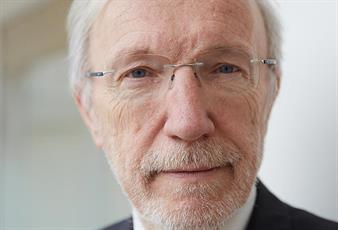Holmes Report 09 May 2014 // 9:06AM GMT
It seems to come around more quickly with every passing year and 180m television viewers make it the most watched music event in the world. Yes, Eurovision season is here again. But can it tell us anything about creativity?
In the UK, the Eurovision Song Contest has long been deemed an over-blown camp-fest, and many of us happily embrace it in that spirit. Eurovision parties are now commonplace, and its fans and followers are among the most rabid in the Twitter-sphere.
But, as one of the world’s most popular arts events, does it deserve closer analysis? Is it even possible that Eurovision provides a forum for some of the globe’s most creative people to exchange ideas through performance, exploring the great themes of our time – gender and sexuality, romantic love, personal and political oppression? Or is it creatively barren; truth and originality discarded in favour of absurd novelty songs and derivative ballads?
At the time of writing, the semi-finals are building towards the main event at the weekend. So I decided to watch them with a fresh pair of eyes, to see what insights could be gleaned. On first impression, the contest resembles nothing so much as a huge circus. The arena evokes the interior of a big top, and the audience are definitely part of the show, being almost as well-lit as the performers.
Jovial and word perfect hosts are part clowns, part ringmasters, exchanging spirited if slightly baffling banter – the sense of being slightly lost in translation only adding to the charm. The vigorously partying crowd strike me as different from the usual festival and gig suspects, not so much music fans as plain old Eurovision fans and there’s a curiously homely vibe – Great European Sing Off anyone? Nevertheless, it’s all very heartfelt – and in fact, the excitement of the audience as the event opens gives me genuine tingles.
As the main meat of the contest begins, the circus-like impression is only bolstered. Given the almost limitless opportunity for staging and choreography, it’s striking how many performances pursue a similar visual theme. This year, it appears to be a trend for over-sized play equipment, as a see-saw, swing and what can only be described as a giant hamster wheel, appear in successive acts. That’s the only thing that unites them though, and the overall experience is somewhat jarring, as we zoom from jaunty candy-coloured Icelanders to a sweatily earnest ‘operatic’ singer, to a beautiful bearded lady singing what seems be the theme from the next Bond movie.
The problem – and the magic, of Eurovision is that in creativity terms, we’re stuck in generation mode. The scope is wide to the point of absurdity, and the only filter is the audience and the power of the text-vote. It’s possible to be caught up in the story of each individual song and performance, but we start again from zero with each successive act, so it’s impossible to take the experience in as a cohesive whole. It’s best viewed as a kind of creative splatter-gun - an unfettered and joyous explosion of personal expression. So sit back, crack open the pink fizz and don that disco wig…. its Eurovision time!
Laura House is senior consultant for change & internal comms at Hill + Knowlton Strategies.


































.jpg)

















